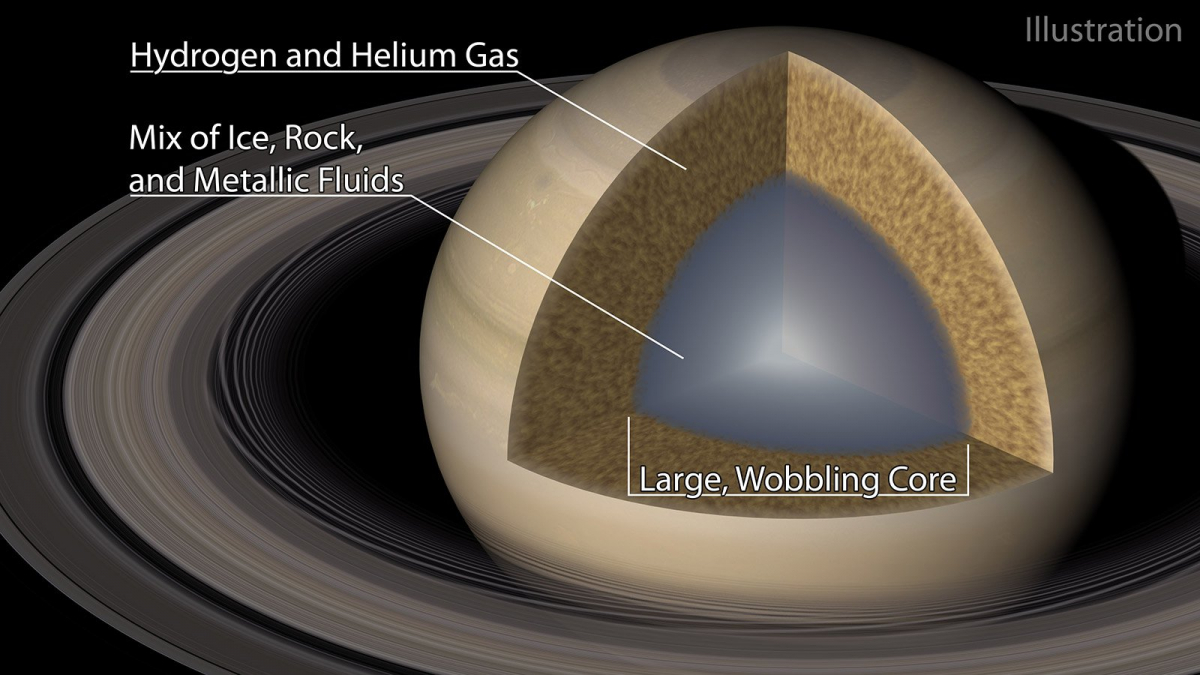Research findings suggest a “fuzzy” core
Two American researchers studied the vibrations between the rings of Saturn – and thus discovered new details about the core of the gas planet.
A new study shows: Inside Saturn there are a lot of things that are different than expected. The two astronomers Christopher Mankovich and Jim Fuller from the California Institute of Technology in Pasadena analyzed the wave propagation in the rings of the planet. On August 16, they published a report in the journal Nature Astronomy that refutes previous assumptions.
Contents
NASA spacecraft provides data for seismographic survey
The idea of taking a closer look at the rings of Saturn is not brand new, but the structural properties of planets have so far mostly been investigated using their gravitational fields. The problem with this is that the measurements in the gravitational field are primarily sensitive to the exterior of the planets, according to Mankovich and Fuller im Abstract their report. The seismographic evaluation with the help of the rings should now draw a more precise picture of the planet’s core.
As a starting point for their research, the two astronomers used data from NASA’s Cassini space probe, which had orbited Saturn for 13 years before it entered Saturn’s atmosphere and burned up in 2017, as planned.
Saturn surprise: This is how the core should actually be built
Contrary to previous assumptions, there is probably no clearly defined core of solid materials hidden inside the gas planet: Instead, Mankovich and Fuller assume a diffuse mixture of rock, ice, liquid metals and gases; the core is accordingly referred to as “fuzzy” . The fuzzy nuclei are like mud, according to lead author Mankovich, “Hydrogen and helium gas in the planet gradually mix with more and more ice and rock the closer one moves to the center of the planet”. This means that the core of Saturn is likely to have a similar structure to that of Jupiter – a data analysis by NASA’s Juno probe, which orbited Jupiter for several years, according to researchers, also indicated a thinned core inside.
Inner values: the core is not only more diffuse, but also larger than expected
In addition to their findings on the composition of the core, the two researchers also found that its blurring is likely to be a good deal larger than expected. According to the calculations, the interior of the gas planet weighs around 55 times as much as the earth, 17 of which are ice and rock, the rest are helium and hydrogen. Overall, the core makes up about 60 percent of the entire planet’s diameter.
The study by Mankovich and Fuller ultimately not only paints a more precise picture of what is hidden in Saturn: If the planetary core is not made of self-contained solid material, as assumed, but is permeated in layers with gases, this also changes the perspective on how a corresponding planet could have emerged – one or the other investigation is likely to be linked to this in the future.



![Dos and don’ts for using ChatGPT in a work context [Anzeige]](https://www.basicthinking.de/blog/wp-content/uploads/2023/05/header_dsc3113-neutral.jpg)